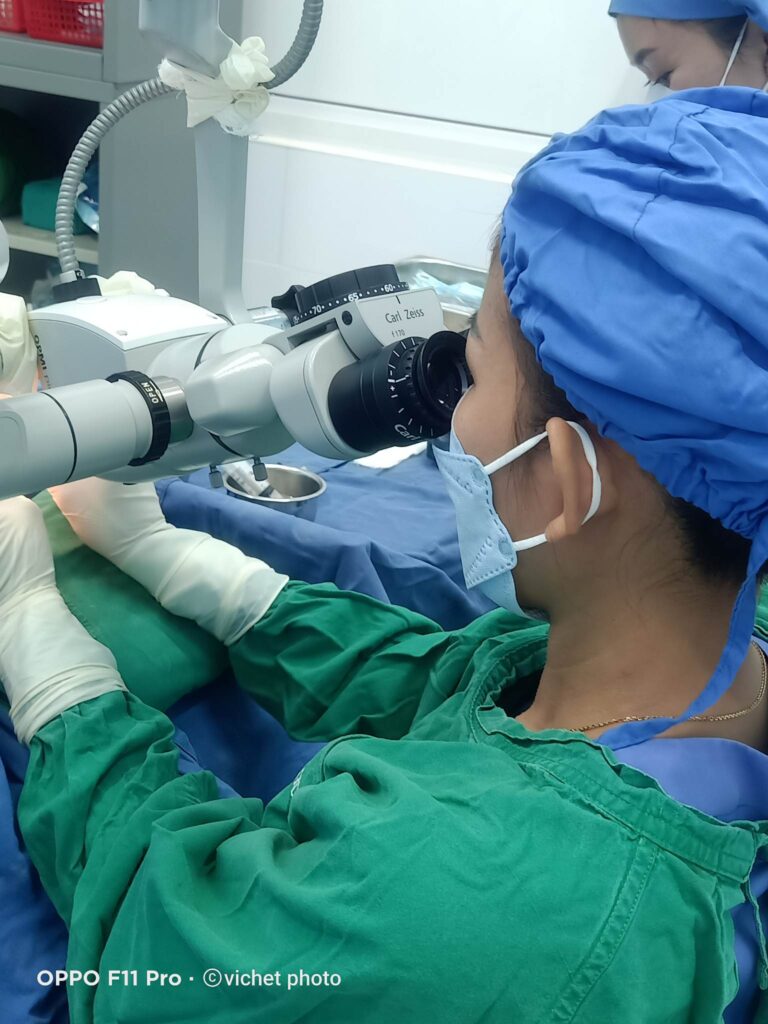
Welcome to our HEARglobally series in which we chat to hearing and ear healthcare professionals working around the world, and learn about their experiences and perspectives working in this field.
Dr Sokdavy Touch (who goes by Dr Davy) kindly joined us for our third interview of this series. She is an Ear, Nose and Throat doctor working at the Children’s Surgical Centre in Phnom Penh, which is a not-for-profit hospital providing free rehabilitative surgery and treatment to low-income Cambodians.
Interviewer: Why did you decide to become an Ear, Nose and Throat Specialist?
Davy: I decided to become an ENT doctor because I love ear surgery – the instrument’s small and the doctors do the surgery by sitting. When I did my ENT residency, I know that patients have to [wait on] a long list for [surgery overseas] so I want to become a doctor who can perform ear surgery and I don’t want the patients waiting on long lists to [wait for a long time for treatment] with their hearing disability.
What are the most common pathologies that patients present with to the Children’s Surgical Centre?
Mostly ear, nose and throat problems. The diseases that I see, the patient has chronic suppurative otitis media with eardrum perforation, or with cholesteatoma. Also, some children with sleep apnoea or allergic rhinitis and nasal polyps, and some disabilities like microtia.

Photo: Dr Davy performing ear surgery on a patient – this is performed whilst seating.
How do people access hearing and ear care in Cambodia?
The Cambodian people access ear and hearing [services] in different ways. They can go to the ENT government hospital. Some of them go to NGOs like my hospital, CSC. [There is also] All Ears Cambodia, [which is an] impact organisation. Or they can go to a private clinic. But we do it in different ways. Some departments provide only ear surgery, some departments provide all the ear and hearing assessment and hearing management like hearing aids or cochlear implants. Some departments only provide hearing tests and fit hearing aids. And some organisations [do] outreach and … take patients to get surgery in town. Or foreigners come down to Cambodia to perform surgery or fit hearing aids.
You’ve contributed to research that has found that often people in Cambodia wait a long time before accessing hearing and ear care after they first notice symptoms. What are some of the reasons for this long time between onset of symptoms and treatment?
When I started [as an] ENT, I found that disease stays for a long time. [Patients] have a history with chronic ear discharge as a child which stops and starts to recur. Some of them know about hearing loss but some patients don’t. Some patients might have only one [ear] with chronic ear disease and the other ear still has good function so they might not notice that they have a hearing loss.
Some patients have bilateral hearing loss, so they don’t notice that they have a hearing loss. I think because the Cambodian people talk loud, that’s the reason the patients themselves don’t notice they have a hearing loss. And [some patients] don’t know where to go to get the treatment, so they just go to the pharmacy to get medication and then they stop [treatment] and don’t know that they have an eardrum perforation, or cholesteatomata, or hearing loss from an inner ear problem.
How does the cost of treatment potentially stop people from accessing hearing and ear care?
Before two years ago, we didn’t have [health insurance] that the company had to pay for their own staff. So, the patient had to pay for health treatment by themselves. So, the cost would be expensive for them. One surgery from 9 years ago cost $300 to $500 (USD)… but right now, compared to the factory worker’s salary, which is about $120-250 per month… the price is high to get the surgery. And the hearing aid cost, it would be – some private hospitals that I know charge $250-350 [for one hearing aid].
What about the quantity of hearing healthcare and ear care professionals in Cambodia – is that a barrier?
Not really… I think right now we have about 100 [professionals with] ENT training. I think the problem is not the amount of healthcare workers, the problem is they only stay in the capital city.
It must take a long time to travel from far regional areas to Phnom Penh, right? Does this potentially prevent people from accessing care?
Yes, transportation is expensive too. They can pay about 5-10 dollars, or 5-25 dollars for one return ticket. Also, Cambodian patients don’t like to go to the hospital by themselves, they need [to be] accompanied by someone, a relative or neighbour – two or three people come with them.
Could you tell me a little about why, for some Cambodians, treating hearing loss is not a priority?
Yes, I saw some patients that need ear surgery to improve their hearing, to stop serious disease, or need hearing aids to improve their hearing, but they decide not to choose that treatment, because hearing loss is not a serious disease [for them]. We see that they can sit and work, but they don’t know that they have a hearing loss or [understand] the effect on their [concentration]. So that is [why] people don’t want to get surgery to stop from work, to stop from the ability to earn money.




